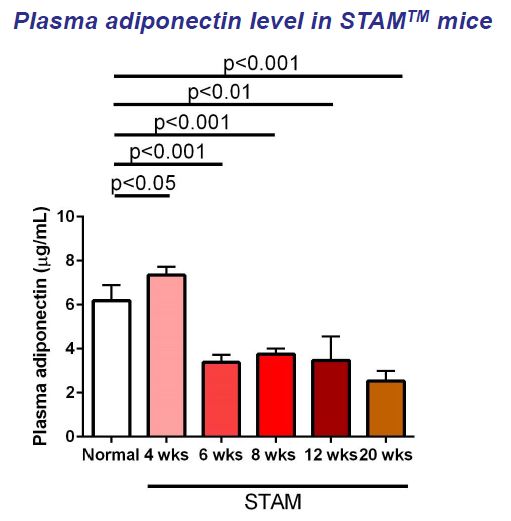Clinically correlated adipose tissue in liver disease model
MASH (Metabolic Dysfunction-Associated Steatohepatitis) is the progressive form of MASLD.
The multiple parallel hits hypothesis has been recognized as the pathophysiology underlying MASH/NASH, namely, multiple factors such as alterations in adipose tissue and gut microbial functions contribute to the onset and progression of MASH/NASH [Tilg et al, 2021].
The adipose tissue is also known as an endocrine organ releasing adipocytokines such as TNF-a, IL-6 and adiponectin. Adiponectin improves insulin sensitivity, glucose and lipid metabolism and has anti-inflammatory effects.
It has been reported that patients with NASH have lower adiponectin levels in their blood compared to healthy subjects. In addition, patients who have lower adiponectin levels show stronger inflammation, implicating that adiponectin plays a critical role in the pathogenesis of MASH/NASH [Musso et al, 2005; Finelli et al, 2013].
In the STAMTM model, a similar decrease in blood adiponectin concentration has been observed. Please see the below figure.

In conclusion, decreased adiponectin levels in the serum of STAMTM mice suggest that the model may have a clinical correlation in the adipose tissue along with the liver.
